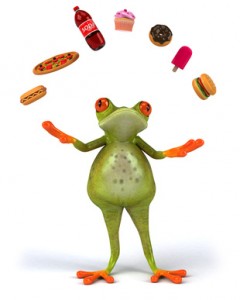How you eat is important too

Most methods for managing eating and weight management concentrate on
- Eating less
- Eating healthier
- Engaging in more physical activity such as exercise.
These are valuable areas to pay attention to. But they only deal with one part of the story. How we eat is just as important – if not more so. And we can use the simple little TATE model to look at the ‘mechanics’ of how we eat with a view to changing this. By the way, this is the subject of the current Pegasus NLP Newsletter – how to uncover the mechanics of healthy and unhealthy eating.
Our mind-body programmes
We have automatic or unconscious programmes for everything we do such as cycling, driving a car, getting annoyed, making a phone call, or eating. If we did not have a programme we would not be able to do the activity.
For example, if you ride a bike you have a programme for cycling. But at one stage you didn’t have such a programme: you didn’t know how to cycle. So you had to learn to cycle – in other words you had to develop a programme for it. And a central piece in this programme is the set of steps we go through in doing the activity – the TATE (or T.O.T.E. as explained in the newsletter) – and you could call this the ‘mechanics’ of the programme.
Your eating programme
You have an automatic programme for eating. And the TATE lists the mechanics of this programme. For example:
1. Trigger: this is what signals to our grain that it is time to eat. It can be a through, a sight, a sensation or emotion, a sound, or something that someone says or which we say to ourselves. The key thing is that if we did not have this Trigger activated we would forget to eat.
2. Action: once the brain receives the trigger it galvanises us into action to find food and to consume it. Here we can look at the manner in which we eat – and not just the food we consume. And it is a great area for changing our eating pattern.
3. Target: In eating we don’t normally decide on a target for the meal – unless we are on a diet of some sort. But the brain needs to know when to signal to the body that the ‘eating activity’ can stop. And this is another great area for introducing change.
4. Exit: each of our programmes is linked to others – so when we finish one we move on to another. This is what we call the Exit. For some people the exit from the eating programme is to sit down and digest what they have eaten. For other people the exit from eating will be into doing other things like going back to work or taking a walk.
How can the TATE help us manage eating?
We can change things at any of the 4 stages:
1. Trigger: for many people the trigger to eat is an emotion such as stress or unhappiness. Reducing calories or fat content is good for health. But unless we also deal with the emotional triggers it’s likely we’ll continue to eat unhealthily.
2. Action: Many of us eat thoughtlessly i.e. we eat without thinking about it. We stuff food into our mouths while watching TV, going from one place to another, or working. This means we’re unlikely to have awareness of how much we are eating. It’s also pretty likely we aren’t chewing the food – and therefore savouring it. Giving real attention to eating as well as eating slower and chewing more can make a big difference.
3. Target: How many of us have an in-built, childhood-learned, fear of leaving food on the plate. We have an automatic compulsion to aim for a clean plate which over-rides any signals from our body suggesting ‘You’ve had enough!’ If you have this compulsion experiment with deliberately leaving some food on the plate at every meal for the next month.
4. Exit: Sitting around and relaxing after your evening meal can be pleasant and beneficial. And it also means we haven’t changed our mind-set from that of eating. This is why the main meal of the day is so often followed by snacking. Doing something active or engaging after a meal changes this mind-set.
Comparing Mike’s strategy with that of Kate
The current newsletter examines and compares two quite different TATE strategies for eating – Mike’s and Kate’s. By tracking what they do at each of the 4 stages we can see how each person’s TATE will have a quite different impact on their health, weight and size.
It works! Well, I read the ‘The Hypnotic Gastric Band’ by Paul Mckenna which uses this technique as its basis. He also uses ‘havening’ – not sure if this was an anchor method or true ADT. So far I’ve lost 1 stone in about 2 months. Nice gradual weight loss. The best thing is my attitude to food has changed and I can better identify hunger vs habit. Thanks for the article. Very interesting comparison with a commercial ‘product’